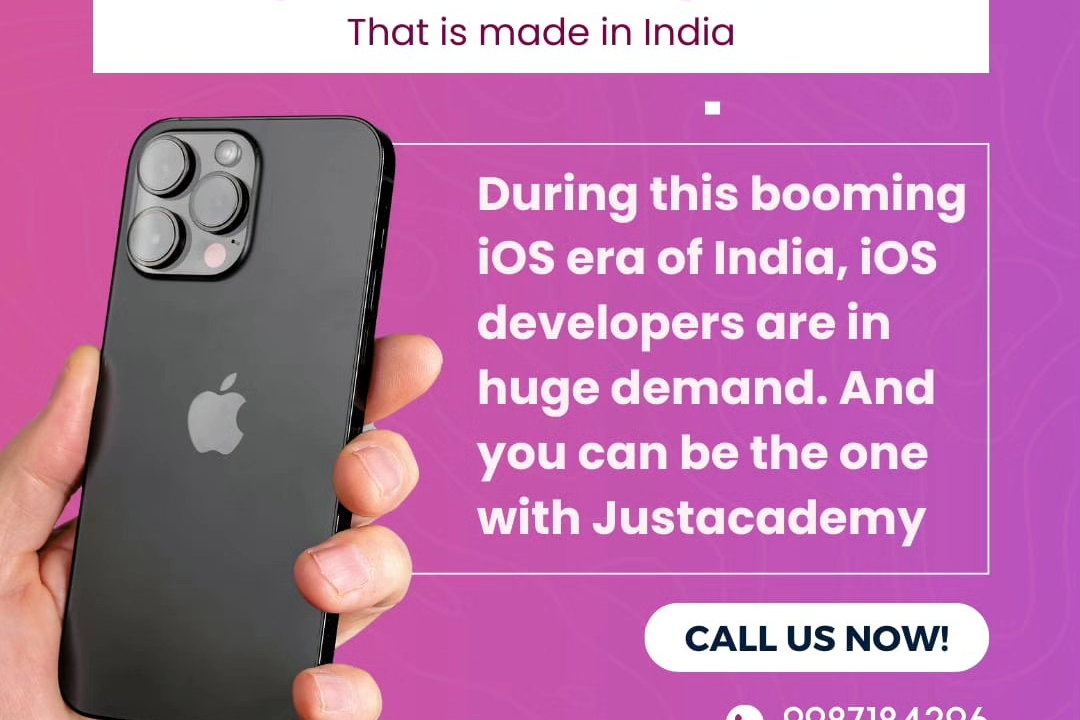User-Centered Design for iOS Applications
Designing iOS Applications with a User-Centered Approach
User-Centered Design for iOS Applications
User-centered design (UCD) for iOS applications is an iterative development process that prioritizes the needs, preferences, and behaviors of users throughout the app design and development lifecycle. It involves conducting thorough user research, including interviews and usability testing, to gather insights into user goals and challenges. Based on this understanding, designers create prototypes and wireframes that emphasize intuitive navigation, accessibility, and visual appeal, ensuring a seamless user experience on iOS devices. By engaging users in continuous feedback loops, UCD helps developers refine features, enhance functionality, and improve overall satisfaction, ultimately leading to an application that resonates with its target audience and effectively fulfills their requirements.
To Download Our Brochure: https://www.justacademy.co/download-brochure-for-free
Message us for more information: +91 9987184296
1 - Understanding User Centered Design: Introduce the concept of UCD, which is a design process focused on the needs, wants, and limitations of the end users at every phase of the design process.
2) Identifying Users and Their Needs: Teach how to identify the target audience, including demographics, behaviors, and needs. Highlight the importance of research in understanding user profiles.
3) User Research Methods: Explore various research methods, such as surveys, interviews, and usability testing, to gather insights about users and their interactions with apps.
4) Personas Development: Show how to create user personas based on research findings that represent the characteristics and goals of actual users, providing a reference point throughout the design process.
5) User Journey Mapping: Explain how to create user journey maps that visualize the steps users take when interacting with the app, helping to identify pain points and areas of improvement.
6) Information Architecture: Discuss the importance of organizing and structuring content within the app in a way that is intuitive and user friendly, facilitating easy navigation.
7) Wireframing: Introduce wireframing as a tool for sketching out basic layouts and functionalities before high fidelity designs are developed. Encourage iterative feedback on these wireframes.
8) Prototyping: Explain the value of creating interactive prototypes that simulate the app experience, enabling user testing early in the development process to gather feedback on functionality and design.
9) Usability Testing: Teach techniques for conducting usability tests, focusing on how real users interact with the app, what challenges they face, and how to gather actionable feedback.
10) Iterative Design Process: Emphasize the iterative nature of UCD, where design is continuously refined based on user feedback and testing, ensuring that the app evolves to better meet user needs.
11) Accessibility in Design: Address the significance of designing apps that are accessible to all users, including those with disabilities. Discuss guidelines and best practices for creating inclusive app experiences.
12) Visual Design Principles: Cover fundamental visual design principles, including color theory, typography, and layout, and how they contribute to creating appealing and functional iOS interfaces.
13) Interaction Design: Introduce principles of interaction design specific to iOS, such as gestures, animations, and interface elements, to enhance user experience and engagement.
14) Feedback Mechanisms: Discuss the importance of providing clear feedback mechanisms within the app for user actions, ensuring users understand when actions are successful or if errors occur.
15) Balancing User Needs with Business Goals: Teach students how to align user centered design with business objectives, ensuring that the app not only meets user needs but also serves the purposes of the organization.
16) Case Studies and Best Practices: Provide examples of successful iOS applications that embody UCD principles. Analyze what makes these apps successful and how students can apply these lessons to their own designs.
17) Tools and Technologies: Introduce design and prototyping tools commonly used in UCD, such as Sketch, Figma, and Adobe XD, emphasizing their relevance in the iOS development process.
18) Final Project: Encourage students to undertake a final project where they apply all the UCD methods learned throughout the course to design and prototype their own iOS application, showcasing their understanding and skills.
By incorporating these points into your training program, students will gain a comprehensive understanding of User Centered Design principles specifically for iOS applications, equipping them with the skills necessary to create user friendly and effective mobile apps.
Browse our course links : https://www.justacademy.co/all-courses
To Join our FREE DEMO Session: Click Here
Contact Us for more info:
Flutter Training in Pandharpur
online automation testing course
Android Courses In Coimbatore
define multithreading in os
flutter training in Malerkotla











